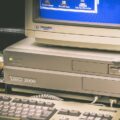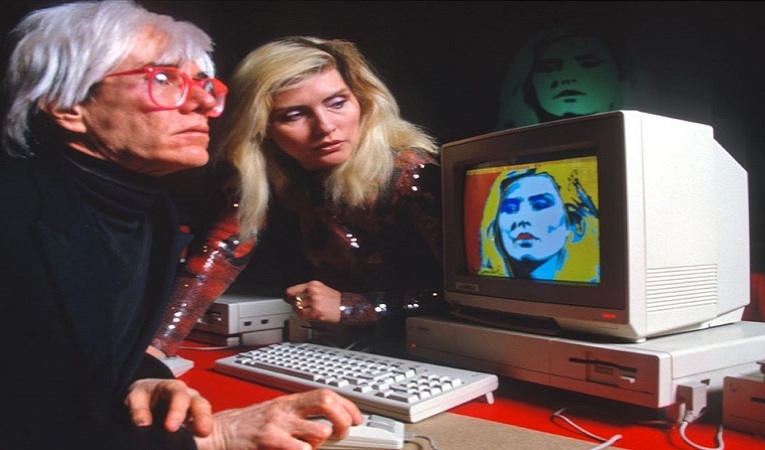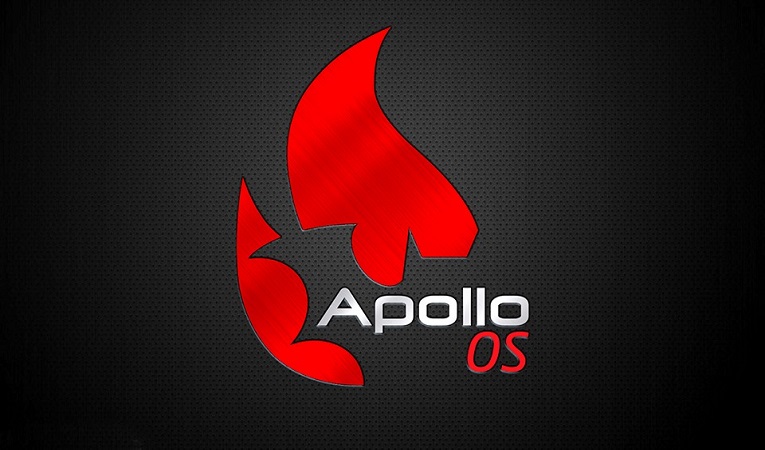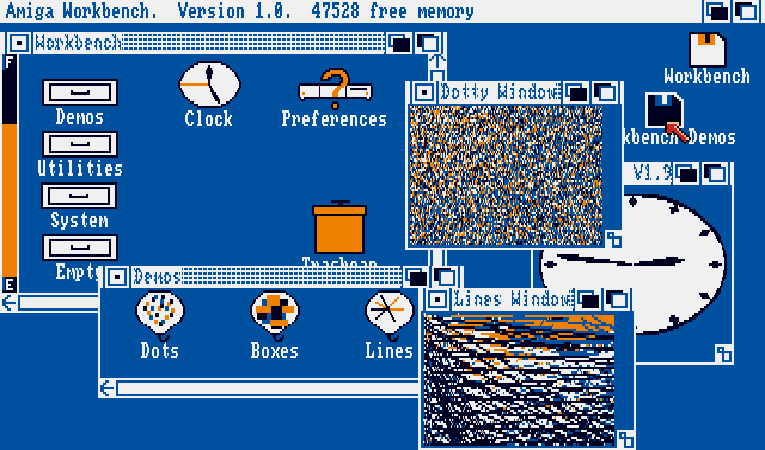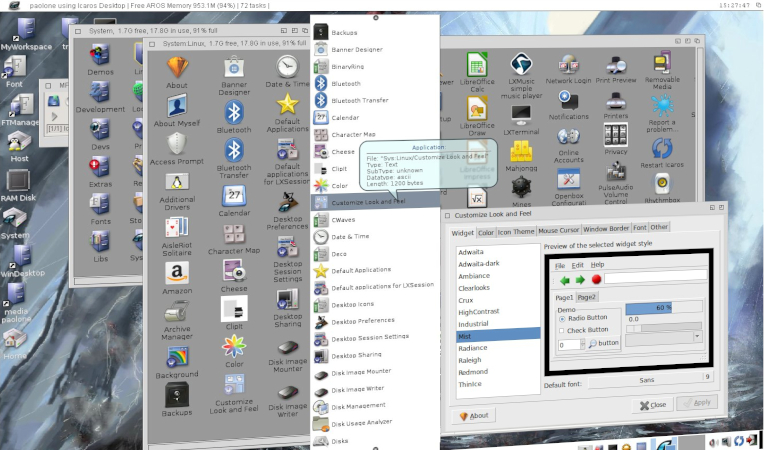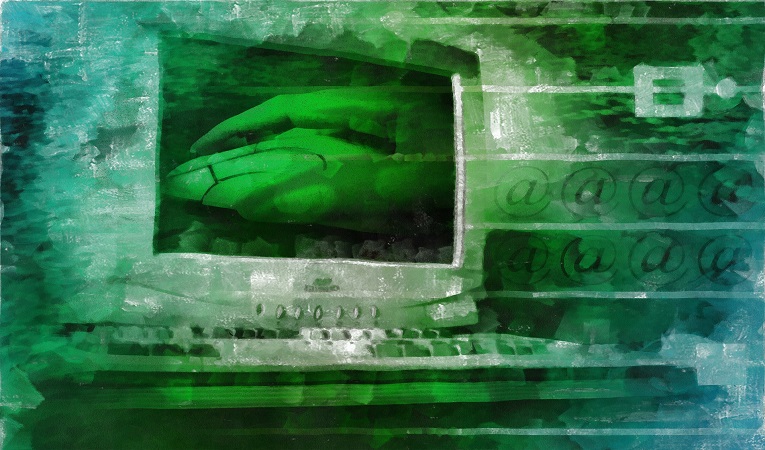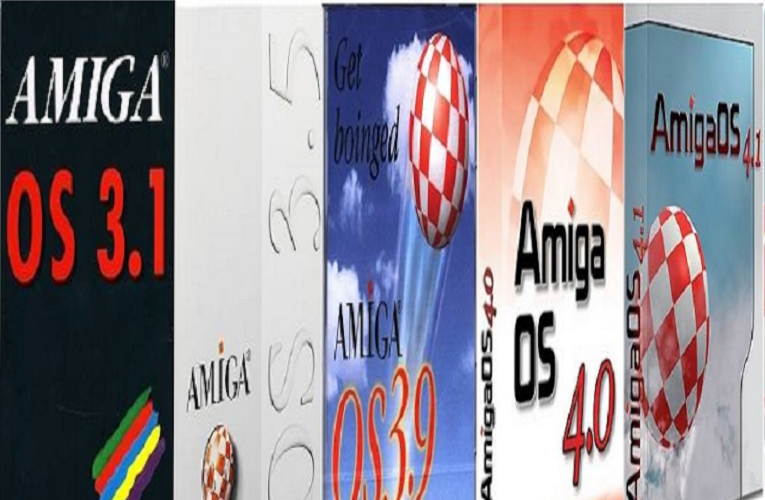
By providing full pre-emptive multitasking in 1985, AmigaOS was even further ahead of its contemporaries than it had been with its lauded graphical and sound capabilities. Mac OS wouldn’t even develop co-operative multitasking until 1988, and it took until 2000 and the development of Mac OS X for it to finally develop pre-emptive multitasking. The IBM PC platform didn’t get a pre-emptive system until the development of OS/2 and Windows 95, and while some previous computers had support for varying forms of UNIX, this was of limited utility, had no GUI (the X Window System being notoriously bloated at the time), and ran slowly on the hardware. AmigaOS is an operating system consisting of two parts: the Kickstart ROM, which contained most of the necessary base components for the operating system in a stunningly small amount of space, and Workbench, the GUI layer for the OS, originally contained on a series of floppy discs. Such a dual-layer system may seem odd to more recent adopters of computer technology, but in the days of limited permanent storage, it showed itself to be an ideal way to allow for a complex operating system without compromise. It also allowed for games to use all of the Amiga’s RAM without having the GUI resident in RAM and taking up precious memory; such games thus booted directly from the Kickstart kernel. Aesthetically, the Workbench GUI of AmigaOS was arguably not as clean or attractive as Apple’s Mac OS to begin with, but had the major advantage of being able to output in colour, which was not available on the Macintosh platform until 1987, and only then on their high-end Macintosh II computers with non-integrated monitors. The ability, exhibited by the Amiga, to output graphics in 4096 colours was a major advantage in the gaming field that the machine had originally been designed for, and only the Atari ST, a similar sort of computer also using a Motorola 68000 processor, could really come close to the Amiga in terms of graphical power. Unfortunately for Commodore, though, a focus on computer gaming and multimedia power gave the machine a “toy-like” reputation which was not to serve them well at a time when computers were only just making their way into businesses. The original IBM PC could hardly be described as a graphical powerhouse, but it was developed by a company which had up to then absolutely dominated the computer market. IBM’s reputation for business machines meant that the IBM PC became a de facto standard in the workplace despite not being as powerful as some of its competitors, and at a time when the computer market was homogenising, IBM managed to secure a healthy share of the high-price end of the market. As such, at this early stage, the Amiga did not manage to attain the success that its powerful hardware and advanced operating system would suggest it deserved.
news source: various sources / image source: GenerationAmiga

